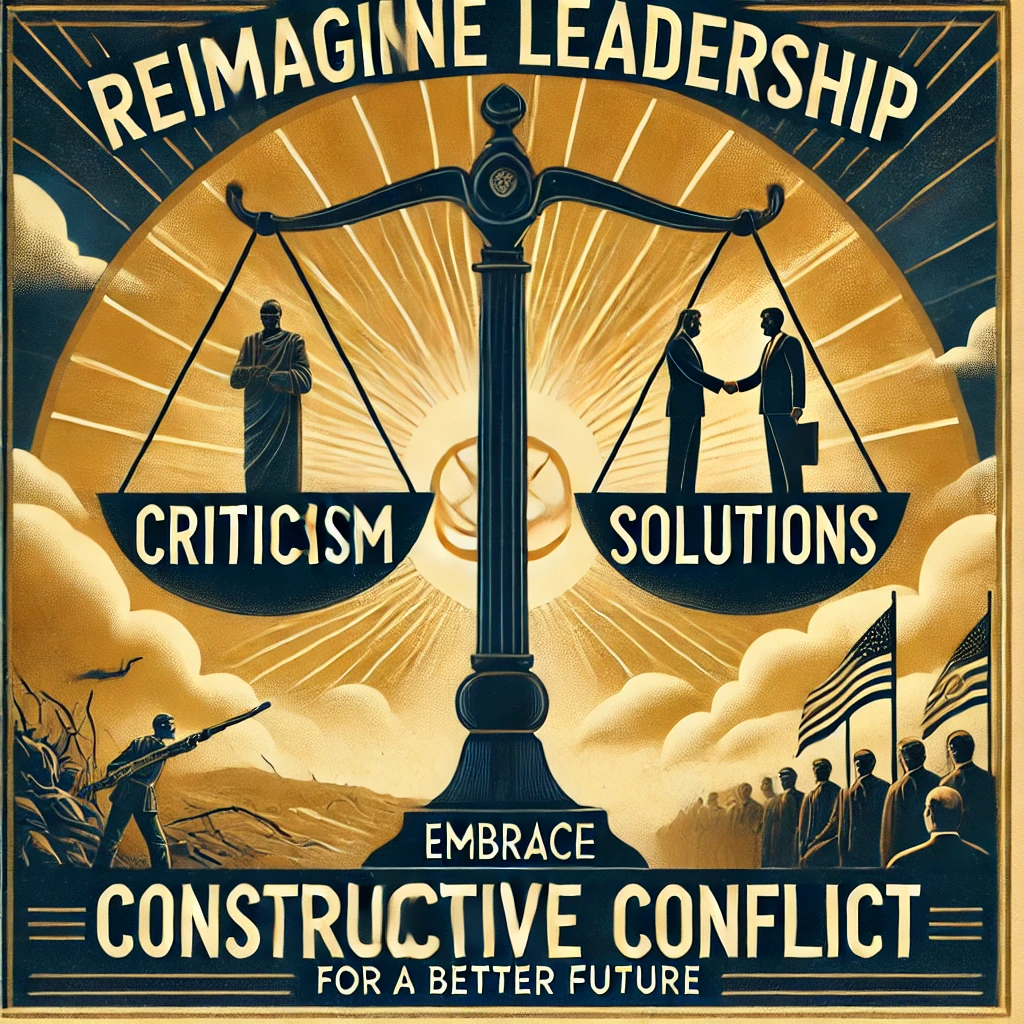Our world is plagued by division, conflict, and destructive decision-making, the path to peace and progress often seems elusive. But what if the solution isn’t to avoid conflict altogether, but to manage it with wisdom, integrity, and foresight? What if, instead of escalating tensions, we allowed space for debates, discussions, and even confrontations that lead to true understanding, growth, and resolution?
The Case for Constructive Criticism and Solutions
At the heart of every issue, whether in politics, social media, or community service, lies one fundamental need constructive criticism. Criticism, when given without an offer for a solution, becomes an empty gesture. It highlights problems but leaves people stranded without a way forward. The real value comes when criticism is paired with actionable solutions or when the focus shifts from just pointing out flaws to actively working toward improvement.
Imagine a society where, instead of tearing each other down, we critiqued ideas with the clear intention of solving them. Where politicians didn’t just point to social issues but presented feasible, thoughtful solutions. Where news outlets didn’t simply sensationalize problems but also explored ways to overcome them. This shift from problem-focused to solution-oriented discussions could spark a transformative culture of growth, accountability, and collaboration.
The Importance of Managed Conflict
The concept of “managed conflict” isn’t just a theoretical ideal it’s essential for growth and progress. Conflict, when channeled productively, can lead to breakthroughs, innovations, and deeper understanding. But unmanaged, unchecked conflict leads to destruction, chaos, and harm.
Consider the idea of world leaders considering war. The potential cost is often millions of lives. Could we reimagine a world where, instead of escalating to war, two leaders in conflict were required to send a “champion” to resolve the dispute? Drawing from ancient traditions, this concept might seem far-fetched, but it raises a critical point: If conflict can be channeled into a smaller, controlled form, the destructive impact on innocent lives can be minimized. Of course, this is symbolic yet it emphasizes the need for direct, responsible resolution rather than allowing egos, power, and fear to dominate.
The true issue at hand is often the lack of a code of honor. When leaders or individuals act without a moral framework, they are driven by self-interest rather than the collective good. This leads to poor decision-making, violence, and unnecessary suffering. What would happen if our leaders operated by a code of honor one that prioritized integrity, responsibility, and a commitment to resolving conflicts without causing harm? Such a code could prevent many of the destructive actions we see today, from wars to divisive political rhetoric.
Reimagining Leadership: A Code of Honor for a Better Future
To foster a world where peace and progress are the norm, we need to start with those in positions of power. Leaders must adhere to a code of honor a set of principles that guide their decisions and actions, ensuring that their choices benefit the collective good rather than personal or political gain. This is not just about diplomacy or nice words; it’s about building a framework where responsibility and accountability are foundational.
A code of honor should include values like integrity, empathy, transparency, and a commitment to finding solutions rather than assigning blame. In a world governed by these principles, the approach to conflict would be one of resolution, not destruction. People would listen twice as hard before speaking, not just to hear but to understand and engage. Criticism would come with clear suggestions for improvement, and debates would aim to resolve, not divide.
Building a Culture of Solution-Oriented Conflict
Incorporating this mindset into our daily lives, from politics to social media, could create a profound shift in the way we approach conflict. It would foster a culture of empathy, creativity, and collective responsibility. We would stop seeing “the other side” as enemies to defeat and instead recognize them as partners in solving a shared problem. The focus would be on finding common ground, not tearing each other down.
We all have a role to play in this transformation. It starts with us: the individuals who choose to engage in discussions, debates, and challenges with integrity and a genuine desire to find solutions. We can cultivate spaces where managed conflict leads to growth, rather than destruction. By shifting the focus from fighting to discussing, from criticism to solutions, we can begin to reshape our world into one where future generations inherit a legacy of progress, not warfare.
